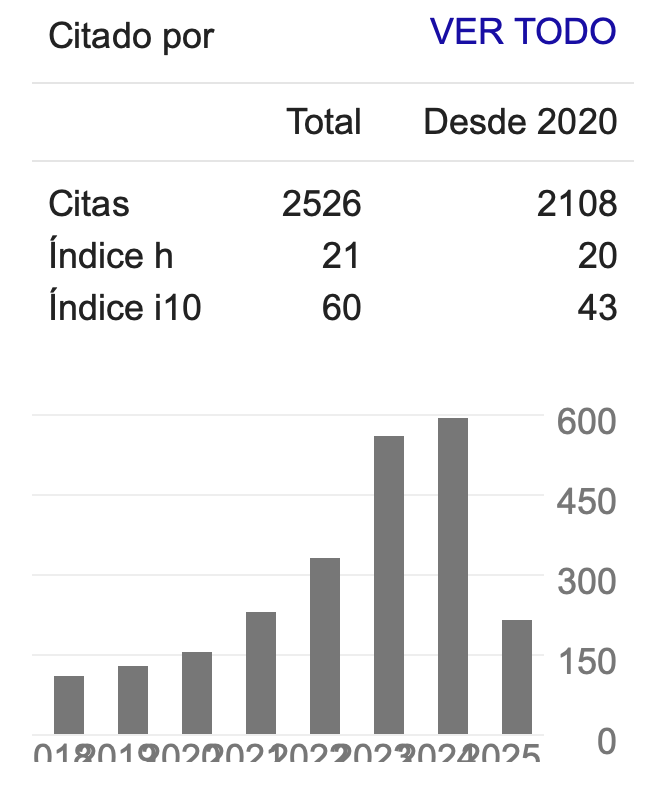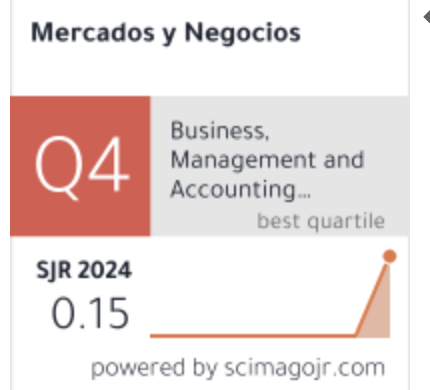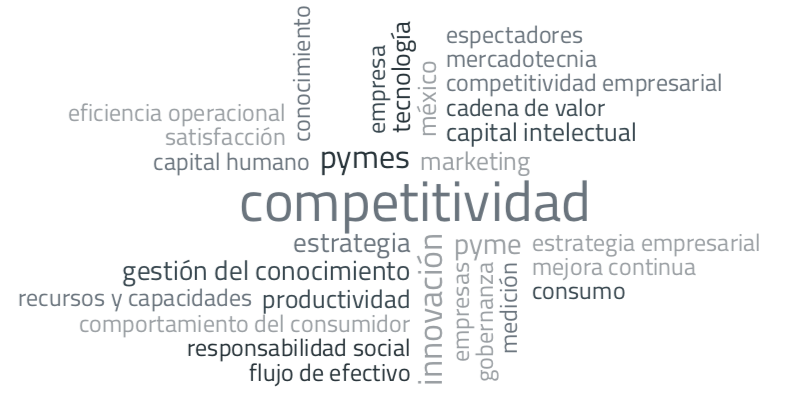Estudio de la satisfacción del usuario de hoteles cinco estrellas de la ZMG: una aplicación del instrumento Servqual
DOI:
https://doi.org/10.32870/myn.v0i22.5161Keywords:
calidad del servicio, hospitalidad, sector hotelero, Servqual, satisfacción del consumidor, lealtad del consumidorAbstract
Actualmente las empresas de hospedaje están enfocando sus esfuerzos mercadológicos hacia la satisfacción del consumidor con el fi n de formar consumidores leales. En esta investigación se evalúan las expectativas de los consumidores versus las percepciones generadas por hoteles cinco estrellas localizados en la zona metropolitana de la ciudad de Guadalajara, para determinar la calidad del servicio, tomado como medida para llegar a la satisfacción de los consumidores. Para ello utilizamos una versión modificada del modelo Servqual para lograr una mayor efectividad en su aplicación. El estudio contiene una muestra inicial de 105 usuarios ubicados en dos hoteles, los cuales fueron examinados a través de un análisis estadístico multivariante. Se concluyó que los usuarios evalúan la calidad del servicio positivamente; a pesar de que existen diferencias entre la percepción de los usuarios en ambos hoteles, al fi nal la calidad del servicio en ambos resulta ser muy similar.References
Anderson, E. W., Fornell, C., & Lehmann, D. R. (1994). Customer satisfaction, market share, and profitability: Findings from Sweden. The Journal of Marketing, 53-66.
Anderson, E. W., Fornell, C., & Mazvancheryl, S. K. (2004). Customer satisfaction and shareholder value. Journal of marketing, 68(4), 172-185.
Babakus, E., & Mangold, W. G. (1992). Adapting the SERVQUAL scale to hospital services: an empirical investigation. Health services research, 26(6), 767.
Carrillat, F. A., Jaramillo, F., & Mulki, J. P. (2007). The validity of the SERVQUAL and SERVPERF scales: A meta-analytic view of 17 years of research across five continents. International Journal of Service Industry Management, 18(5), 472-490.
Cronin Jr, J. J., & Taylor, S. A. (1992). Measuring service quality: a reexamination and extension. The journal of marketing, 55-68.
Cronin Jr, J. J., & Taylor, S. A. (1994). SERVPERF versus SERVQUAL: reconciling performance-based and perceptions-minus-expectations measurement of service quality. The Journal of Marketing, 125-131.
Drucker, P. F. (1954). The Practice of Management: A Study of the Most Important Function in America Society. Harper & Brothers.
Fornell, C. (1992). A national customer satisfaction barometer: The Swedish experience. the Journal of Marketing, 6-21.
Gremler, D. D., & Gwinner, K. P. (2000). Customer-employee rapport in service relationships. Journal of Service Research, 3(1), 82-104.
Grönroos, C. (1989). Defining marketing: a market-oriented approach. European journal of marketing, 23(1), 52-60.
Groth, J. C., & Dye, R. T. (1999). Service quality: perceived value, expectations, shortfalls, and bonuses. Managing Service Quality: An International Journal, 9(4), 274-286.
Hair, J. O. S. E. P. H., Anderson, R., Tatham, R., & Black, W. (1999). Análisis multivariado. Análisis multivariado.
Hessamaldin, M. S. (2008). Customer satisfaction in Four Star Isfahan Hotels: an application of SERVQUAL model.
Kandampully, J. (2000). The impact of demand fluctuation on the quality of service: a tourism industry example. Managing Service Quality: An International Journal, 10(1), 10-19.
KARATEPE, O. M., & AVCI, T. (2002). Measuring service quality in the hotel industry: Evidences from Northern Cyprus. Anatolia, 13(1), 19-32.
Kuenzel, S. (2009). Development of Customer satisfaction and customer loyalty in business to business markets. Journal of International Business and Economics, 9(4), 78-87.
Krishnamurthy, R., SivaKumar, M. A. K., & Sellamuthu, P. (2010). Influence of service quality on customer satisfaction: Application of SERVQUAL model.International Journal of Business and Management, 5(4), 117.
Lau, P. M., Akbar, A. K., & Fie, D. Y. G. (2005). Service quality: a study of the luxury hotels in Malaysia. Journal of American Academy of Business, 7(2), 46-55.
Nunnally, J. C. B., & Arellano, I. H. V. (1995). Teoría psicométrica (No. 152.8 N8).
Oliver, R. L. (1980). A cognitive model of the antecedents and consequences of satisfaction decisions. Journal of marketing research, 460-469.
Parasuraman, A., Zeithaml, V. A., & Berry, L. L. (1985). A conceptual model of service quality and its implications for future research. the Journal of Marketing, 41-50.
Parasuraman, A., Zeithaml, V., & Berry, L. (2002). SERVQUAL: a multiple-item scale for measuring consumer perceptions of service quality. Retailing: critical concepts, 64(1), 140.
Parasuraman, A., Berry, L. L., & Zeithaml, V. A. (1991). Refinement and reassessment of the SERVQUAL scale. Journal of retailing, 67(4), 420.
Parasuraman, A., Zeithaml, V. A., & Berry, L. L. (1994). Alternative scales for measuring service quality: a comparative assessment based on psychometric and diagnostic criteria. Journal of retailing, 70(3), 201-230.
Reichheld, F. F., & Teal, T. (1996). The loyalty effect, harvard business school press. Boston, MA.
Rechinhheld, F., & Sasser, W. (1990). Zero defections: Quality comes to service. Harvard Business Review, 68(5), 105-111.
Rust, R. T., & Oliver, R. L. (2000). Should we delight the customer?. Journal of the Academy of Marketing Science, 28(1), 86-94.
Schmidt, F. L., & Hunter, J. E. (2014). Methods of meta-analysis: Correcting error and bias in research findings. Sage publications.
Setó Pamies, D. (2003). La inluencia de la calidad de servicio, la imagen, la satisfacción y la confianza en la fidelidad del cliente. Revista Española de Investigación de Marketing. ESIC, 7(1), 27-55.
Shaharudrn, M. R., Yusof, K. M. M., Elias, S. J., & Mansor, S. W. (2009). Factors Affecting Customer Satisfaction in After-Sales Service of Malaysian Electronic Business Market/FACTEURS QUI INFLUENCENT SUR LA SATISFACTION DES CLIENTS DANS LE SERVICE APRÈS-VENTE DU MARCHÉ DE COMMERCE ÉLECTRONIQUE EN MALAISIE. Canadian Social Science, 5(6), 10.
van Herk, H., Poortinga, Y. H., & Verhallen, T. M. (2005). Equivalence of survey data: relevance for international marketing. European Journal of Marketing, 39(3/4), 351-364.
Vijayadurai, J. (2008). Service Quality, Customer Satisfaction and Behavioural Intention in Hotel Industry. Journal of marketing & communication, 3(3).
Witkowski, T. H., & Wolfinbarger, M. F. (2002). Comparative service quality: German and American ratings across service settings. Journal of Business Research, 55(11), 875-881.
Yilmaz, I. (2010). Do hotel customers use a multi-expectation framework in the evaluation of services? A study in Cappadocia, Turkey. Tourism and Hospitality Research, 10(1), 59-69.
Zeithaml, V. A., Parasuraman, A., & Berry, L. L. (1990). Delivering quality service: Balancing customer perceptions and expectations. Simon and Schuster.
Zeithaml, V. A., Bitner, M. J., & Gremler, D. D. (1996). Services Marketing McGraw Hill. New York.
Zeithaml, V. A. & Bitner, M, J.(2003) Service Marketing: Integrating Customer Focus Across the Firm.
Downloads
Published
How to Cite
Issue
Section
License
Mercados y Negocios by Department of Mercadotecnia y Negocios Internacionales. University of Guadalajara is licensed under a License Creative Commons Attribution-NonCommercial 4.0 International.
The author retains the copyright.








